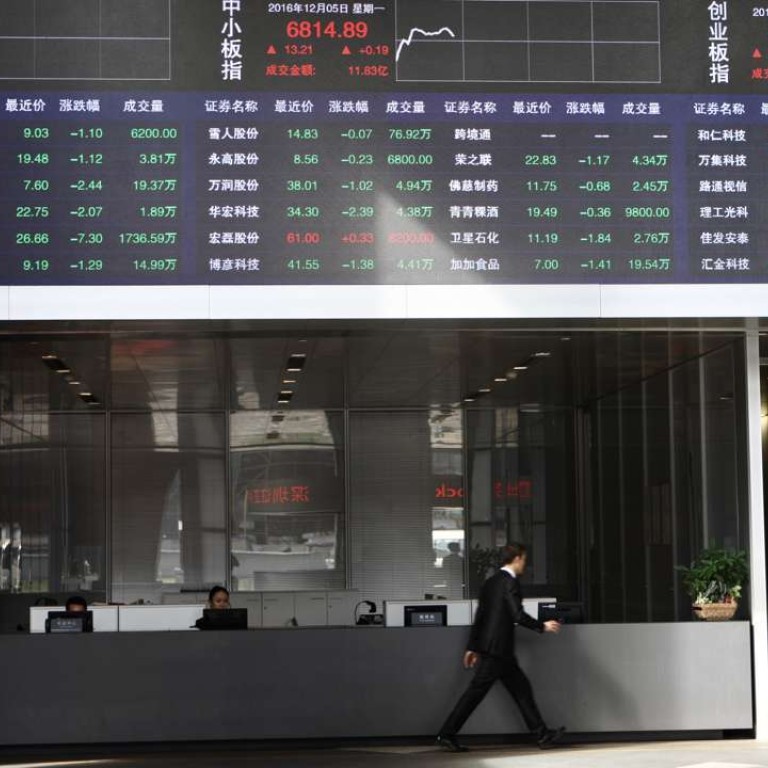
Rural lender with three straight years of losses is now the most expensive bank stock in China
The story has been updated with Thursday's share closing figures.
A small Chinese rural bank that suffered profit declines for three years has soared limit-up by 10 per cent for five straight days as of Thursday, making it the country’s most expensive bank stock with an astounding price to earnings ratio of 40x, almost seven times the banking sector’s average P/E of 6.4.
Jiangsu Zhangjiagang Rural Commercial Bank (JZRCB), which debuted on the Shenzhen Stock Exchange on January 24 , was up by the daily-increase limit of 10 per cent immediately after the market opened on Thursday, closing at 16.2 yuan. It had a market cap of 29.3 billion yuan.
The stock has surged 10 per cent for five consecutive sessions, up a combined 61 per cent from last Thursday’s closing level.
JZRCB said in a statement on Wednesday that it noticed the “unusual fluctuations” in its share prices.
However, the bank said it doesn’t have any “undisclosed material information” or ““major changes in its business”.
It also warned investors against risks related to the company’s “rising non-performing loans” and “further declines in profits”.
The second most expensive stock in the banking sector is also a small rural lender in Jiangsu province.
Jiangsu Jiangyin Rural Commercial Bank (JJRCB), which was the first listed rural bank in A-share markets in September 2016, also rose 10 per cent for a fifth day in a row on Thursday, closing at 16.23 yuan in Shenzhen.
Banking stocks like JZRCB and JJRCB have relatively small market caps and fewer holdings by institutional investors
Its P/E ratio reached 38, the second highest in the sector so far. The market cap was 28.7 billion yuan.
“I suggest investors not chase these bank stocks, which have significantly higher valuations versus their peers,” said Deng Mao, an analyst for Dongguan Securities.
“The surge can’t be explained by fundamentals,” he added.
JZRCB, which is based in the manufacturing powerhouse of Jiangsu province and mainly provides service to local small to medium companies, saw its net profit decline 27 per cent year on year in 2014 and decline 8 per cent in 2015.
For the first three quarters of 2016, the bank’s net income fell further by 4.1 per cent year on year to 512 million yuan. Its asset quality has also been worsening, with the non-performing loan ratio up to 2 per cent by the end of last June.
JJRCB had a similarly disappointing performance. It had posted three years of profit declines from 2014 to 2016, with 2016 profit dropping 4.4 per cent to 778 million yuan. It also had the highest bad-loan ratio among all listed banks, reaching 2.42 per cent by the end of the third quarter of last year.
“Banking stocks like JZRCB and JJRCB have relatively small market caps and fewer holdings by institutional investors. They are more likely to become the target of speculative investment,” Deng said.
Before September 2016, there had been no new listing in China’s banking sector for six years.
“That’s probably why the market has a speculative euphoria toward these ‘sub-new’ bank stocks,” Deng said. “Sub-new stocks” are those companies that have been listed for less than a year.
JJRCB said in a statement on Wednesday that it was unaware of the reasons for the stock surges in the past few sessions and that it had no “material information” that needed to be disclosed.
The company also warned investors that it had just posted a profit decline in 2016.

